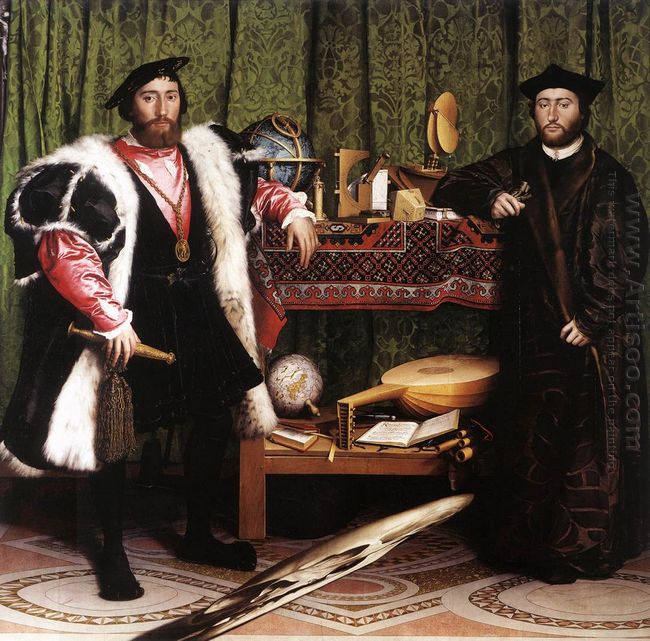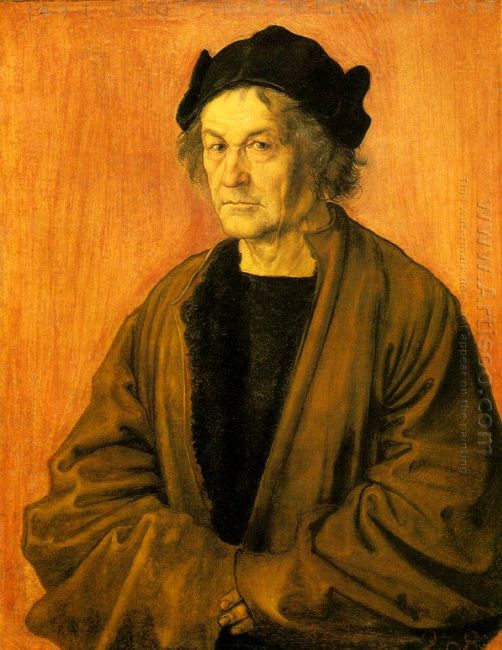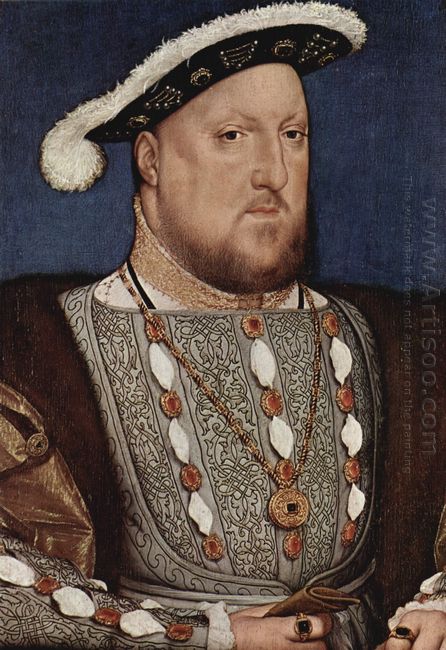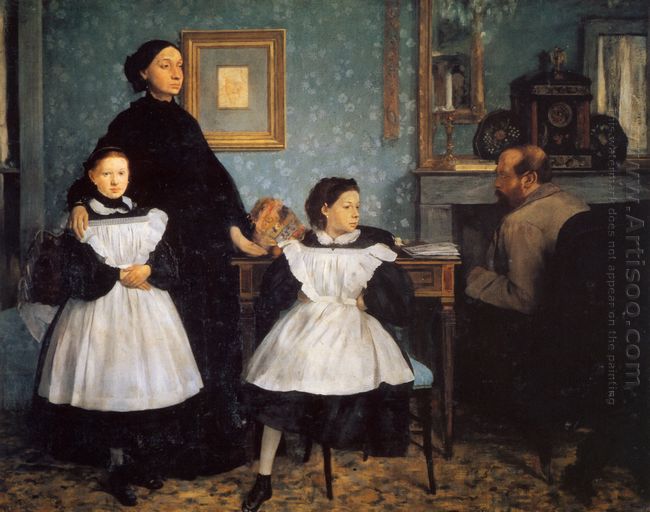In the UK, Hans Holbein portraits became increasingly famous. And the King Henry VIII hired him as a court painter, some government figures also paid very attention to him. In 1533, entrusted by the French ministers in Britain, he completed The Ambassadors.
There were two people in the portrait painting: the left one was called Young De Dantewill (1504~1555), who was originally a noble; the right one was called George De Self, who was originally a bishop (1508/09~1541). The left was wearing a noble warrior and the fur coat, with a set of golden sheath dagger in the right hand and left palm on the desk, the right bishop was wearing a velvet robe, leaning on the other end of the table.
This painting was well known for its meticulous description for details. All sundries were seen as in the Portrait of Kish. It’s said that the right bishop was an open-minded and self-cultivated scholar, who was skilled in music, literature and German, and sympathized with the religious reform movement. So on one side of him, there was the mandolin, flute, and an open hymn with the scores and the poetry of German religious reform leader Martin Luther (to represent the painter’s sympathy for Lutheran). In addition, all kinds of scientific instruments, such as the planetarium, spring balance, mathematical calculator, globe, arithmetic textbook, etc were placed on or under the table. The floor’s mosaic was a symbol of the universe. The strange thing was that between the floor and the table there was a slanting illegible image. It was difficult to determine what this image showed. Some analysts said, it was the reflection of the shadow. But there was no exact answer to determine which symbols the skull mask represented. One more popular argument was the shadow of the skull was a personal insignia of Young De Dantewill, because his cap badge had this image. Therefore it was the amplification of the mirror image on the cap badge.
Since this Northern Renaissance painting drew two people, so the human faces were relatively much smaller. This painting was quite like the scenery photography after the invention of early photography. But in the 16th century, the portrait was a new type of art. The upper society’s hobby was the decisive factor, so such mind may be the same as the requirements of modern people. But only depending on the artist’s exquisite skills to draw was not an easy thing. Holbein's portraits indeed played a leading role in European portrait art and had great influence on the later British paintings.






